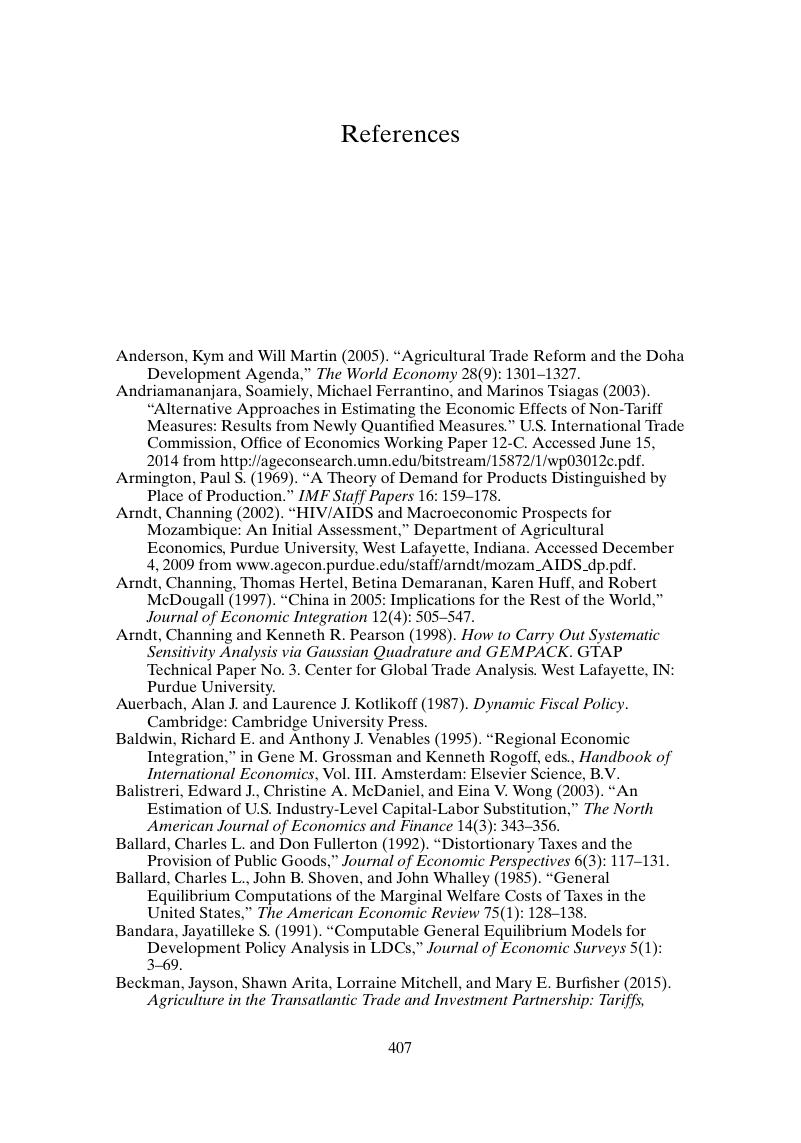Book contents
- Frontmatter
- Dedication
- Contents
- List of Text Boxes
- Acknowledgments
- About This Book
- 1 Introduction to Computable General Equilibrium Models
- 2 Elements of a Computable General Equilibrium Model
- 3 The CGE Model Database
- 4 Final Demand in a CGE Model
- 5 Supply in a CGE Model
- 6 Factors of Production in a CGE Model
- 7 Trade in a CGE Model
- 8 Taxes in a CGE Model
- 9 Regulations in a CGE Model
- 10 Conclusion: Frontiers in CGE Modeling
- Model Exercises
- Appendix A Social Accounting Matrix for the United States, 2007 $U.S. Billions
- Appendix B Price and Quantity Variables and Definitions in a Standard CGE Model
- Glossary
- Practice and Review Answer Key 385
- Model Exercise Answer Key 391
- References
- Author Index
- Subject Index
- References
References
Published online by Cambridge University Press: 02 February 2017
- Frontmatter
- Dedication
- Contents
- List of Text Boxes
- Acknowledgments
- About This Book
- 1 Introduction to Computable General Equilibrium Models
- 2 Elements of a Computable General Equilibrium Model
- 3 The CGE Model Database
- 4 Final Demand in a CGE Model
- 5 Supply in a CGE Model
- 6 Factors of Production in a CGE Model
- 7 Trade in a CGE Model
- 8 Taxes in a CGE Model
- 9 Regulations in a CGE Model
- 10 Conclusion: Frontiers in CGE Modeling
- Model Exercises
- Appendix A Social Accounting Matrix for the United States, 2007 $U.S. Billions
- Appendix B Price and Quantity Variables and Definitions in a Standard CGE Model
- Glossary
- Practice and Review Answer Key 385
- Model Exercise Answer Key 391
- References
- Author Index
- Subject Index
- References
Summary

- Type
- Chapter
- Information
- Introduction to Computable General Equilibrium Models , pp. 407 - 418Publisher: Cambridge University PressPrint publication year: 2017

